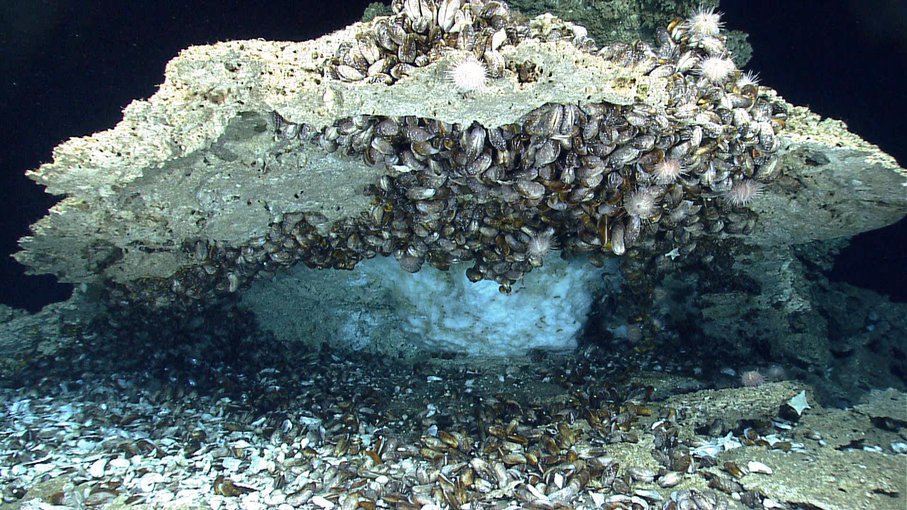
Sept. 29, 2023
Research Highlight
Discovery of New Proteins Advance Understanding of Climate and Astrobiology

Methane clathrate (white, ice-like material) under a rock from the seafloor of the northern Gulf of Mexico. Deposits such as these demonstrate that methane and other gases cross the seafloor and enter the ocean.Image credit: NOAA.
NASA-supported researchers have made a remarkable discovery about how biology is involved in the formation of methane clathrate in the deep sea. Clathrates are ice-like structures that trap greenhouse gases like methane in structures akin to tiny ice cages. Being trapped in these ice cages prevents the gas from bubbling up through the ocean and into the atmosphere. It is thought that reserves such as this store gigatons of greenhouse gas beneath the seafloor.
Until now, the role of biomolecules in the formation and stability of clathrates was completely unknown. When studying sediment samples collected off the coast of Oregon, the team discovered a new class of bacterial proteins dubbed clathrate-binding proteins (CbpAs). The CbpAs interact with clathrates and suppress their growth as effectively as ecologically harmful commercial chemicals.
The results have important implications for the search for habitable environments beyond Earth. Clathrates could exist in other locations in the Solar System, such as the subsurface of Mars or the ocean floors of icy worlds like Europa. If microorganisms ever survived on these worlds, similar mechanisms could help them trap and access liquid water in places where that water would otherwise freeze or sublimate.
Click here to read a press release concerning the results of this research from Georgia Tech.
The paper, “Molecular basis for inhibition of methane clathrate growth by a deep subsurface bacterial protein,” was published in the Proceedings of the National Academy of Science: Nexus.